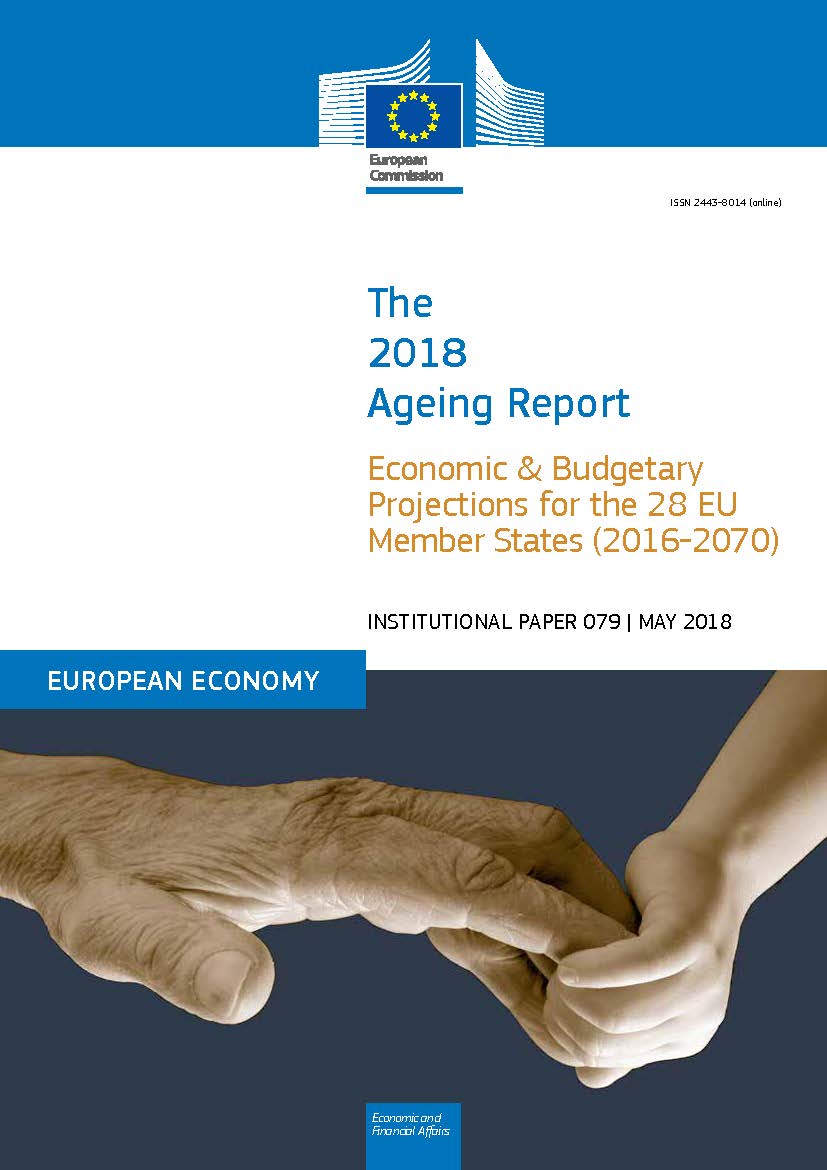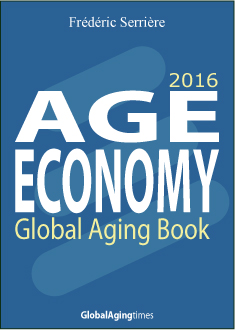This report looks at the long-run economic and fiscal implications of Europe’s ageing population.
Significantly lower working-age population projected for the EU over the coming decades The demographic projections over the long term reveal that the EU is ‘turning increasingly grey’ in the coming decades. The total population in the EU is projected to increase from 511 million in 2016 to 520 million in 2070, but the working-age population (15-64) will decrease significantly from 333 million in 2016 to 292 million in 2070 due to fertility, life expectancy and migration flow dynamics.
For males, the projected population in 2070 is lower than or close to the population in 2016 in all age cohorts between 0 and 64 years old. Conversely, in all age cohorts of 65 years old and above, the projected population in 2070 is higher than in 2016. For females, the projected population in 2070 is lower than or close to the population in 2016 in all age cohorts between 0 and 69. Conversely, in the age cohorts above 69 years old, the projected population in 2070 will be higher than in 2016. Moreover, while in 2016 the largest cohort for both males and females is 45-49 years old, in 2070 the largest cohort will be 70-74 years old for women and 50-54 years old for men. Overall, the median age will rise by 4 years for both men and women by 2070. Similar developments are projected for the euro area.
The projected changes in the population structure reflect assumptions on fertility rates, life expectancy and migration flows. The total fertility rate is assumed to rise in almost all Member States between 2016 and 2070, increasing from 1.58 to 1.81 for the EU as whole. In the EU, life expectancy at birth for males is expected to increase by 7.8 years over the projection period, from 78.3 in 2016 to 86.1 in 2070. For females, life expectancy at birth is projected to increase by 6.6 years, from 83.7 in 2016 to 90.3 in 2070, implying a convergence of life expectancy between males and females. Annual net migration inflows to the EU are projected to decrease from about 1.5 million people in 2016 to 0.8 million people by 2070, representing a decreased contribution from 0.3% to 0.15% of the total population.
The projected demographic old-age dependency ratio almost doubling over the long-term
The old-age dependency ratio (people aged 65 and above relative to those aged 15 to 64) in the EU is projected to increase by 21.6 pps. over the projection period, from 29.6% in 2016 to 51.2% in 2070. This implies that the EU would go from having 3.3 working-age people for every person aged over 65 years to only two working-age persons. Most of this increase is driven by the very old-age dependency ratio (people aged 80 and above relative to those aged 15-64) which is rising by 14 pps. (8.3% to 22.3%) over this horizon.
Overall participation and employment rates projected to rise, in particular for women and for older workers thanks to implemented pension reforms
Participation rates are projected using a cohort simulation model (CSM), which allows taking into account assumptions on the impact on the participation rate of older workers of legislated pension reforms, including measures to be phased in gradually. In most of the EU Member States that have recently legislated pension reforms, these are projected to have a sizeable impact on the labour market participation of workers aged 55-64, depending on their magnitude and phasing in. The projections show an average increase of approximately 12.2 pps. in the participation rate for men (4 ). The expected increase in the participation rates of women between 55-64 years old is slightly higher (16.2 pps. on average), reflecting the progressive convergence of participation rates across genders in a number of countries. The total participation rate for those aged 20-64 is projected to rise from 77.5% in 2016 to 80.7% in 2070 in the EU as a whole and from 77.6% to 80.6% in the euro area. This is being driven by higher female participation, which is projected to rise by 5.5 pps. compared with 0.8 pps. for males in the EU and by 5.7 pps. compared with 0.3 pps. for men in the euro area.


